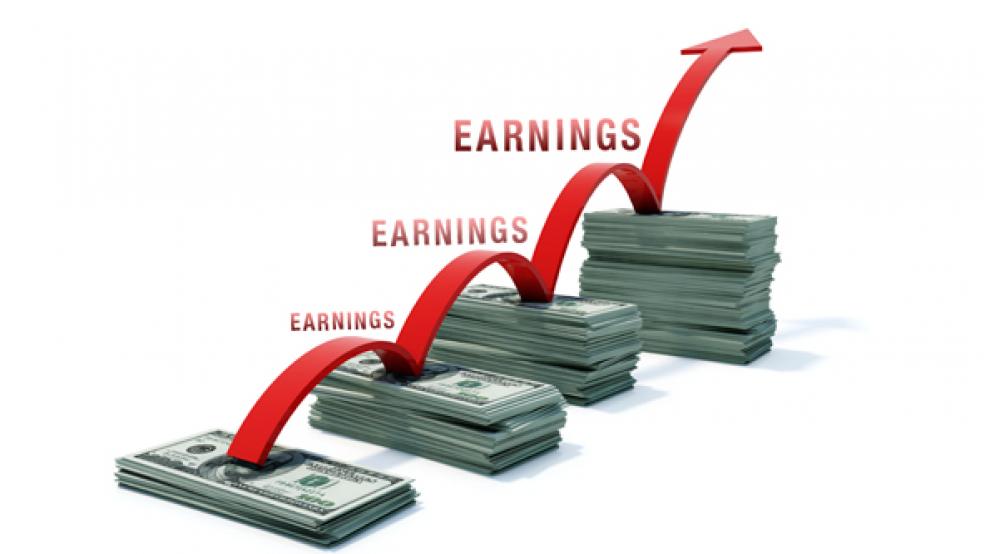The fourth-quarter earnings season just underway is likely to feature an uneasy combination of caution and celebration – a mix that was on display even as Alcoa (NYSE: AA) got things off to a rip-roaring start by reporting an actual profit of 21 cents a share, in spite of the fact that aluminum prices tumbled by about 12 percent over the course of the year.

Alcoa’s earnings report is usually seen as the “official” start of the reporting period, given the company’s size, its early reporting date and the notion that – to some extent, at least – it can be viewed as a kind of harbinger because it supplies so many parts of the U.S. economy. In most years, its utility as a signal is rather minimal. This year, however, what’s important to note is the fundamental improvement in results, combined with the sense from management that they may still be treading on thin ice.
A recent stabilization in the price of aluminum helped Alcoa improve its bottom line, as have cost-cutting efforts and an increase in sales to the aerospace industry, a business that has higher margins than many other of Alcoa’s divisions. Nonetheless, while Alcoa’s execs took an upbeat tone when discussing these results and their outlook for 2013 with investors on a conference call in the wake of the announcement, they were careful not to encourage any festivities. “There is still uncertainty,” said Klaus Kleinfeld, referring primarily to the potential impact on defense spending of budget negotiations in Washington.
Looking beyond just Alcoa, it will be tough to draw many sweeping conclusions from results for the just-ended fourth quarter because of all the one-time events that affected corporate profits. Airlines dealt with bad weather; retailers had keep stores closed for days or weeks as consumers stayed home to deal with floods or the lack of gasoline in the wake of Hurricane Sandy. That accounts for a lot of the cutbacks to analysts’ estimates that took place steadily throughout the quarter and trimmed the forecast for S&P 500 profits growth by more than a third to only 3 percent over year-earlier levels.
Some sectors have seen estimates fall dramatically. While the banks are expected to show the greatest growth in earnings for the fourth quarter – 14.5 percent – that is only a shadow of the 28.9 percent increase that analysts had been calling for at the beginning of October. As for materials stocks like Alcoa, well, a forecast of a 21.9 percent increase in profits became meager expected growth rate of 0.7 percent by the end of the quarter. Technology stocks – thanks in part to Apple’s (NASDAQ: AAPL) struggles – are likely to see a forecast 9.4 percent growth in profits as of early October become a 1 percent decline in earnings when the results for companies in the sector are finally logged, analysts now say.
In light of those big cuts in analysts’ estimates, the fact that earnings season has started with “positive” surprises from about two-thirds of the 25 companies in the S&P 500 to have reported so far is really not that significant. Set in the context of what has happened since early October, all it really means is that analysts were slightly over zealous in cutting back forecasts, not that the companies are topping those original forecasts dating back to early October.
The question on all minds now is whether what’s to be an underwhelming level of earnings growth for the fourth quarter represents some kind trough. As Jeff Kleintop, market strategist at LPL Financial, points out, if fourth-quarter profits do prove to be the lowest in any quarter of 2012, this will be both unusual and unwelcome. Traditionally, he says, when the economy is growing the fourth quarter often is the period in which companies report the strongest earnings.
At the moment, Wall Street is predicting that companies in the S&P 500 index will report earnings growth of about 10 percent in 2013. That’s not dramatic, but better than the 3.7 percent or so that some pundits are saying will be the case in 2012. But will those forecasts stay in place, or will drama surrounding the debt ceiling negotiations or other events throw that into question by weighing on revenues or margins?
Certainly, David Bleustein, head of research at UBS Investment Research, suggests that the bulk of corporate earnings guidance in the coming weeks is likely to be negative, although perhaps less so than in recent quarters. (Companies typically use their quarterly earnings reports and the inevitable conference calls that follow to gently “guide” analysts’ future profit expectations higher or lower.)
Some of the same factors that may constrain profit growth may also limit the ability of the market to deliver any expansion in the price-earnings ratio for the S&P 500 – and thus higher share prices. Confidence remains fleeting and elusive; welcome when it appears but hard to sustain for any length of time. Nonetheless, with many blue-chip companies trading at relative discounts to their historic valuations while offering higher yields than they have in many years, investors may well opt to seize hold of any good news and respond by driving the stock prices of individual companies significantly higher. Get ready for a bumpy ride.






